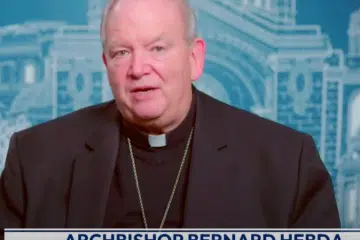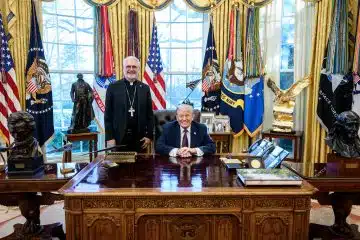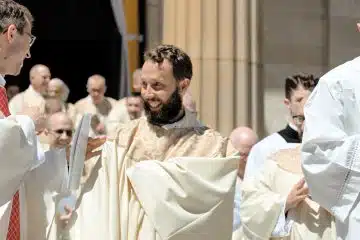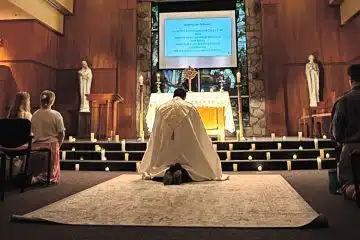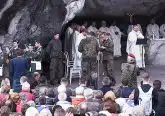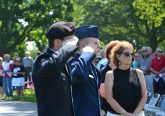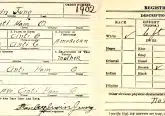WPAFB Dayton Airforce base parish boasts active faith community
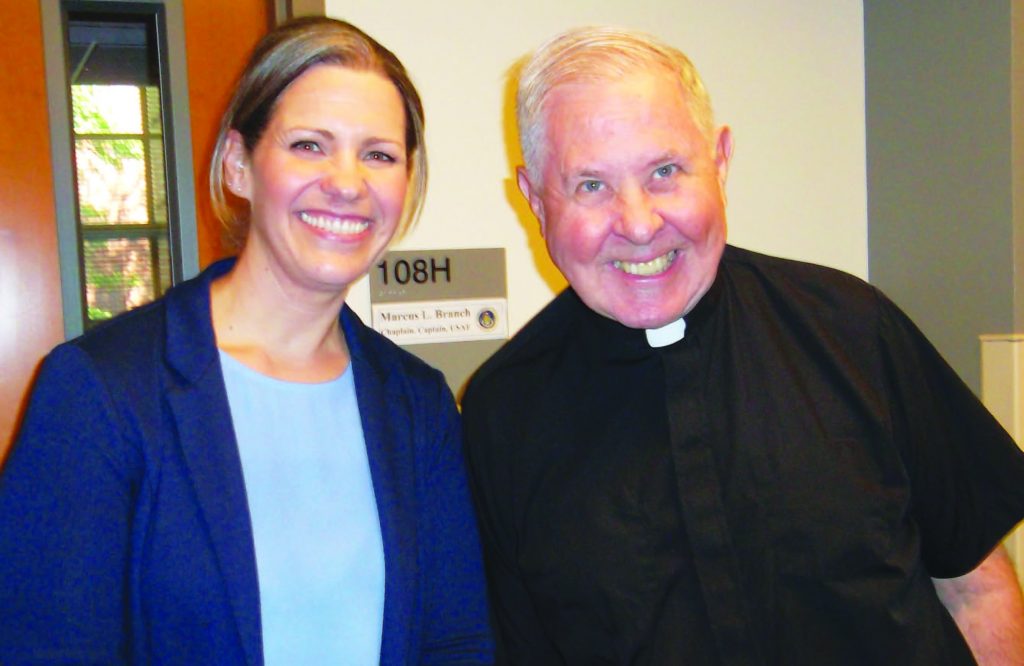
with Father Donald Moss, pastor. (Courtesy Photo)
By Sharon Semanie
Nine children are scheduled to be confirmed at Our Lady Queen of Peace Parish, Wright-Patterson Air Force Base (WPAFB), in November. The celebrant, Archbishop Timothy Broglio does not represent the Archdiocese of Cincinnati, but rather the Archdiocese for Military Services (USA) in Washington, D.C., the sole endorser of Roman Catholic chaplains and priests for the U.S. government.
Cheri Champagne, Catholic coordinator at Our Lady Queen of Peace, recently provided an inside glimpse into WPAFB and the role of its faith community during a Dayton area parish leadership summit held at the Wright-Patterson Club. The purpose of the meeting was to “foster a mutually beneficial relationship between our base and civilian communities in support of our Catholic military members).” Parish priests and deacons in attendance represented St. Peter, Huber Heights; St. Charles Borromeo, Kettering; St. Luke, Beavercreek; Queen of Apostles, Dayton; Ascension, Kettering; Mary, Help of Christians, Fairborn; and Sacred Heart, New Carlisle.
Attendees were told WPAFB, a massive base covering 8,125 acres with three runways, is the home to Air Force Materiel Command and executes 40 percent of the USAF budget. It serves as the largest single site employer in Ohio, has an annual payroll of $2.2 billion, and provides a $4.3 billion economic impact per year to the area. Its schools receive $700,000 in federal aid annually and the ever-popular National Museum of the United States Air Force attracts over 1.1 million visitors each year.
The Chaplain Corps office is located in Building 219, a former hospital built in the 1940s. It’s one of many “helping agencies” on base that assists airmen and their families with mental health, alcohol and drug abuse, family advocacy, educational research, and, of course, religious accommodation and liberties.
The 88th Air Base Wing Chaplain Corps aims to “provide spiritual care and ensure all airmen and their families have opportunities to exercise their constitutional right to the free exercise of religion.” There are four chapels on the base, including two free-standing chapels — Kittyhawk and Prairies — along with a teaching hospital and the Air Force Institute of Technology. Father Donald Moss, a retired navy chaplain “on loan” from the Diocese of Austin, Texas. serves as pastor of Our Lady Queen of Peace, and is assisted by Father David Vincent of Ludlow Falls.
The uniformed chaplains and base priests, noted Champagne, provide for the spiritual needs of the WPAFB community and preside at the 10 weekly Masses on base along with weddings and funerals. They also provide counseling and resilience training, which she described as “weekend retreats, faith-based activities, or perhaps taking lunch to a unit” on base.
There are an estimated 225 registered families at Our Lady Queen of Peace and these numbers naturally fluctuate due to military moves that generally take place during the summer and winter cycles. Twenty-five percent of the Catholic community represents active duty, while the remainder are veterans and civilians. Weekly religious education classes attract 90-plus children ranging from pre-school to senior high age.
Champagne, an active mother of five who lives in Beavercreek, said the WPAFB Catholic community plays an active role outside its base as well. Outreach activities include the St. Vincent de Paul homeless shelter meal preparation and serving. There are also Respect Life activities, prayer chains and vigils, mission trips, blessing bags created by youth that contain selfcare items, a prayer tent at the Air Force Marathon, and Christmas caroling at the VA Hospital. Champagne was among 17 WPAFB individuals — both Catholic and Protestant —who assisted in the aftermath of Hurricane Harvey in Houston.
“We also have a strong working relationship with the Archdiocese of Cincinnati,” she added, citing catechist training, compliance with child safety standards, local program participation, local resource use, and financial aid. In addition, WPAFB also has the support of Catholics from off-base communities, dual registrations and military members who turn to the WPAFB chapel for support whether they are registered or not.
The summit, said Champagne, hopefully created an awareness among attendees of opportunities they have “to get involved,” from emergency support, such as hospital visitations or Red Cross/military notifications, to reciprocity for Mass backup and assisting military families with unique needs.
AMS, created by St. John Paul II in 1985, ministers to the U.S. Armed Forces and represents the largest archdiocese worldwide responsible for over 1.8 million men, women and children; 220 military installations in 29 countries, 153 VA medical centers, and federal employees serving outside the U.S boundaries in 134 countries.
AMS, according to Champagne, receives no funding from the U.S. government, but relies solely on the “generosity of its chaplains, men and women in uniform and private benefactors.”
“Unlike a conventional diocese, the AMS has no parishes or parish boundaries,” she said. Chapels are the property of the U.S. government and are multi-use shared by other religious denominations. All sacramental records are maintained by the AMS in D.C. and is “in stark contrast with conventional parishes where sacraments are recorded in the parish registry and the parish has control of the physical space.”


